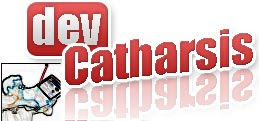P&P team has just release this analysis of the Enterprise Library deployment in both a 32-bit (2 and 4 processor) and 64-bit (2 and 4 processor) environment, where they examine their relative performance to a 32-bit 2 processor server.
The Analysis
The following analysis is of the Enterprise Library deployment in both a 32-bit (2 and 4 processor) and 64-bit (2 and 4 processor) environment and examines their relative performance to a 32-bit 2 processor server. To get a realistic comparison to measure since the 32-bit and 64-bit worlds have differences, the setups used were designed to be as equivalent as possible. The goal was to obtain the relative performance measurements of the Enterprise Library Logging Application Block, Caching Application Block, Data Access Application Block and the scalability from going from a 2 to a 4 bit processor arrangement in each environment. The various configurations and measurement results are below.
Some Fast Answers
- Q: How long did it take to convert Enterprise Library from 32 bit to 64 bit?
- A: None, since the .NET Framework uses an intermediate language which is processor independent and uses a just-in-time compiler to convert it to machine code as required by the deployment environment. So it's not a recompile—rather just run it on a 64-bit .NET-based machine—although, there can be specific issues see the section "Moving to the 64-Bit World."
- Q: Does the Enterprise Library scale?
- A: Yes, the results show a 50 to 70 % gain in the tested scenarios going from a 2 to 4 processor environment regardless if it's 32 bit or 64 bit, see section 4 for details.
- Q: What are the gains in going 64 bit?
- A: Scabililty, see section "Scabililty View of the Caching Block" for details


No comments:
Post a Comment